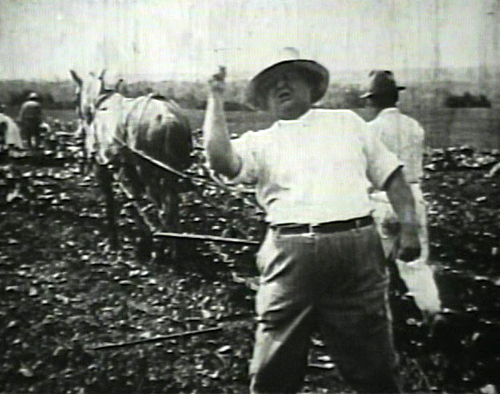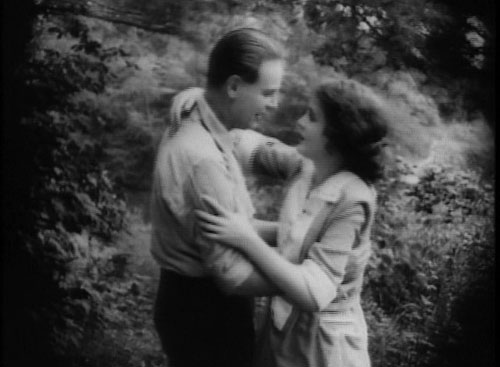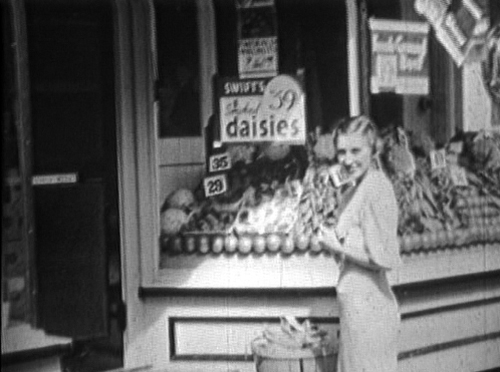Dates:
Location:
John A. and Helen P. Becker GallerySelected Works



About
A series of four silent films from the Northeast Historic Film Archive in Bucksport, Maine, will be shown over the course of the summer. Each was filmed in Maine in the early twentieth century and captures the “way Maine was” through satire and fictional biography. These films show Maine from a slightly different perspective over the course of approximately 30 years. They also suggest, to a certain extent, how Mainers saw themselves and simultaneously how Maine was presented to the larger world. The schedule follows:
June 10–July 6
The Sailor’s Sacrifice, c. 1909, 20 minutes
Director: Larry Trimble
Starring: Florence Turner and Jean the Vitagraph Dog
Producer: American Vitagraph
Maine’s Larry Trimble directed this early silent melodrama for American Vitagraph, one of the earliest American film studios, based in Brooklyn, New York. Starring Trimble's dog Jean, who came into later fame as the “Vitagraph Dog” and Florence Turner, the already established “Vitagraph Girl,” the film follows the trials and tribulations of a sailor, his girlfriend, and his girlfriend’s family, once he is purported to be lost at sea. Trimble directed at least a half a dozen films for Vitagraph on the southern coast of Maine (perhaps Cape Elizabeth). Many of the nation’s first major studios made films in Maine, including Edison and Lubin in addition to Vitagraph.
July 8–July 27
Just Maine Folk, 1912, 8 minutes
Director: Barry O’Neil
Starring: Ethel Clayton and Harry Meyers
Producer: Lubin Manufacturing Company
In the summer of 1912, Barry O’Neil brought his company of thirty to Cape Elizabeth where they stayed for thirteen weeks in little cottages on a cliff they nicknamed “Lubinville-by-the-sea” after the main studio called Lubinville outside Philadelphia. Just Maine Folk is a caricature of rural life intended for what was probably a predominantly urban viewing audience.
July 29 – August 17
Brother of the Bear, 1921, ca. 33 minutes
Director: Philip Carle
Starring: Huntley Gordon, Charles Slattery, and Mary Astor
Producer: Holman Day Productions, Augusta, Maine
Holman Francis Day is a well-known Maine writer, famous as a journalist for Lewiston’s Evening Journal, one of the most important newspapers during Day’s lifetime. He also wrote twenty-three novels, three books of ballads, magazine stories, as well as radio and film scenarios. In 1920-1921, Day made two dozen short films in Augusta, Maine, including Brother of the Bear that featured a small role by Mary Astor when she was a teenager. Many of Day’s films can be described as “Northwoods Adventures” with traditional story lines. Brother of the Bear was filmed on the Kennebec River and premiered at The Strand in Gardiner, Maine in 1921.
August 19–Sept. 9
Bar Harbor Movie Queen, 1936, 24 minutes
Director: Margaret Cram
Boston-based itinerant filmmaker Margaret Cram (Margaret Cram Showalter) traveled to towns in New England making “Movie Queen” films. Local townspeople were cast in the films that document a movie queen on a return visit to her hometown as the whole town shows up to welcome her. (This one features twenty-five year old Vera Sleeper from Bar Harbor as the movie queen). The film then follows her visits to local stores whose owners invite her to admire their merchandise. Some have speculated that merchants were asked to pay the filmmaker a small fee to be included in the film, possibly the first example of "product placement.” Cram’s movies all include a scene in which the movie queen is kidnapped (with the local dignitaries playing the roles of kidnappers) and then rescued by a handsome hero. The films were usually shot over the course of a week, returned to Boston for processing, and then projected unedited on the following Saturday night when large crowds turned out and paid the price of admission to see themselves, family, and friends on the big screen.
About Northeast Historic Films
The majority of Northeast Historic Film's collections of moving images consists of regional film and videotape from Maine, New Hampshire, Massachusetts and Vermont. Major collections include film and videotape originating from television stations or created primarily for broadcast, industrial works created by and for corporate and industrial entities, professionally-created fictional works, and titles made by independent creators intended for public viewing. Northeast Historic Film also has one of the largest collections of amateur films and home movies in North America. The range of collections at NHF offers a glimpse of how life in northern New England has changed during the past 100 years, and how it continues to evolve. Northeast Historic Film has been a leader in raising an awareness of the need to preserve these films and make them accessible.

